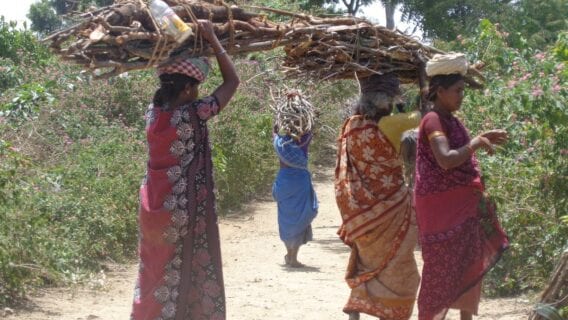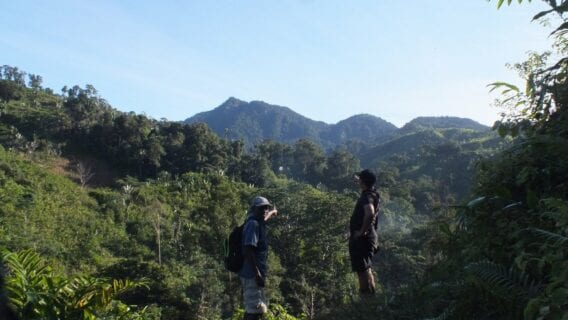Looking back at 2024: our year in review

The impacts of our work achieved in 2024 evidences the power of collective, conservation action. Below are some of our highlights:

Financing opportunities for conservation action
In 2024, IUCN Save Our Species launched two calls for proposals. The Fondation Segré Conservation Action Fund’s fourth call focused on conserving threatened ungulates, essential for ecosystem health, and supported projects and researchers across multiple regions. Additionally, the first call for Phase II of the SOS Lemurs initiative targeted civil society organisations that received support in Phase I, funding projects in Madagascar to protect threatened lemurs.

Facilitating knowledge sharing among partners
In 2024, IUCN Save Our Species and the ITHCP hosted two key workshops for their grantees. The 2nd ITHCP Grantees Workshop in Bangkok, attended by 53 participants, focused on knowledge sharing and collaboration in tiger conservation, covering topics like monitoring, human-wildlife conflict, and habitat management.
The SOS African Wildlife Initiative lessons learned workshop was held in Nairobi and attended by over 40 people. It celebrated achievements, shared lessons, and explored strategies for human-wildlife conflict mitigation, biodiversity monitoring, and community engagement.

Communicating impacts
In 2024, the ITHCP launched a report to mark 10 years of conservation impacts. According to the latest data, the programme contributed to the estimated 40% increase in tiger numbers globally between 2015 and 2022. It also managed to restore 10,500 hectares of habitat and plant 500,000 trees. Funded with €47.5 million, it further empowered 95,000 people with sustainable livelihoods and trained 10,000 in law enforcement.
An impact report on the SOS African Wildlife initiative’s Rapid Action Grants revealed that we invested €3.8 million to support 46 grantees across 23 African countries in addressing urgent conservation challenges. As a result, 58 threatened species were protected, more than 272,000 people benefited from the development of sustainable livelihoods and more than 35,000 km were covered through wildlife protection patrols.

Supporting global governance to protect nature
Advocating for increased finance and policy to support our frontline conservation partners, in 2024, IUCN continued to engage with international Conventions to highlight the role of species recovery in achieving the Global Biodiversity Framework.
IUCN attended the 14th Conference of the Parties (COP) of the Convention on Migratory Species (CMS) in Uzbekistan last February, where we participated in negotiations, working groups and events to advise Parties on conservation issues and priorities to implement the Convention. During the COP, IUCN and the CMS Secretariat signed a Memorandum of Understanding (MoU) to raise funds and facilitate the implementation of the African Carnivore Initiative (ACI), a joint programme of work between the CMS and the Convention on International Trade in Endangered Species of Wild Fauna and Flora (CITES).
At the 16th COP of the Convention on Biological Diversity (CBD) in Colombia, IUCN and partners emphasised the role of targeted interventions to recover species in halting biodiversity loss, profiling initiatives like the SOS African Wildlife initiative and the ITHCP. The Global Species Action Plan (GSAP) and its online knowledge platform (GSAP SKILLS) were also introduced. At COP16 of the United Nations Convention to Combat Desertification (UNCCD) in Riyadh, Saudi Arabia, IUCN Save Our Species focused on integrating biodiversity conservation into land restoration efforts, stressing sustainable land use and local community involvement.

Local level achievements
Our partners continued to achieve transformative impacts for species, habitats and people.

A tiger conservation project in India supported 200 households through a livelihood programme, training local communities in sustainable practices like agriculture and animal husbandry. It also launched a 15-month youth fellowship for 20 participants and organised learning trips for 64 individuals to successful conservation sites, strengthening local capacity and leadership.

In Senegal, a project has confirmed the resurgence of Endangered African Wild Dogs in Niokolo Koba National Park, once thought to be extinct. This marks the last known population of the species in West Africa. Initially a pack of seven, the population has now grown to two packs, totalling 25 to 30 individuals, and is being closely monitored.

A project in Argentina is working to save the Endangered Naked Characin, threatened by invasive fish species and habitat loss. To protect the species, two barriers have been built to block invasive fish, and the initial plan for two ponds has been significantly expanded with 18 ponds now established in breeding sanctuaries with restored native vegetation.

In Romania, a project has successfully released 682 sturgeons into the wild to increase stocks. The programme also focuses on identifying and collecting valuable sturgeon specimens for a living gene bank, which will support future breeding and release efforts along the Lower Danube.
Have a wonderful year!
– The IUCN Save Our Species and the Integrated Tiger Habitat Conservation Programme teams.




